Redomond Barton Cafferata - PART 3
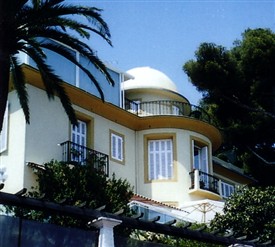
Villa Natacha, Nice
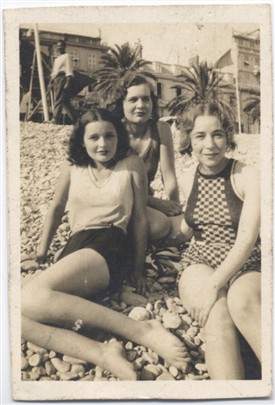
Redmond's daughters Tatiana (Left) and Sonia (Centre) in Nice, 1930
Richard Cafferata
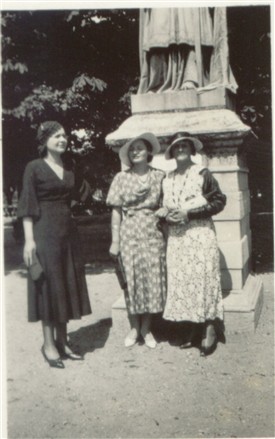
Redmond's wife and daughters in Paris, 1933
Richard Cafferata
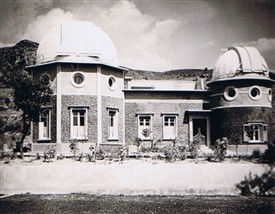
L'Observatoire, Dignes
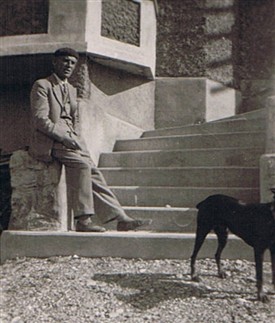
Redmond at L'Observatoire
Richard Cafferata
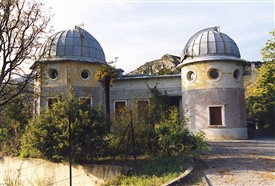
L'Observatoire in 2007
Post-War Life
By Richard Cafferata
Redmond’s service record shows he was discharged on the 10th January 1919 but that it was post-dated to the 23rd. The service record also shows Redmond’s main address as “Trent View”, Newark on Trent, a house that Redmond had lived in since before the First World War, and continued to occupy until at least 1927. (1)
An addition to the service record in June 1920 gave an alternative address of “Palais Donadei, 8 Rue Maréchal Joffre, Nice”, a high class hotel in the centre of the French town. His arrival there marked the start of a long period of living in France, where he was to indulge in his consuming passion of astronomy. Redmond’s initial expression of this was when, in 1923-24, he built Villa Natacha, a luxurious residence topped with an observatory dome for his Cassegrain 620mm telescope. (2)
This was, of course a hugely expensive project which characterised Redmond’s extravagant and expensive tastes. His position as one of the directors of Cafferata & Co. allowed him to finance his lifestyle but, at the time Redmond was building Villa Natacha, Cafferata & Co. was still undergoing the re-organisation made necessary by the death of his father before the war. In a letter dated 8th January 1923 Frank Whitfield, the family solicitor, wrote:
“I still think the financial position will have to be carefully considered, and explained to Redmond, for it is obvious that he cannot, once the Company is in working order, to go on drawing Capital from the Concern.
“I am considering the best way of dealing with this, for it would be disastrous for everyone, including himself, if he continued his present heavy expenditure and, of course, there must come a day of reckoning, sooner or later.” (3)
Despite these warnings, Villa Natacha was completed and Redmond stayed there for four years. During this time he continued in his position with Cafferata & Co. and was handsomely rewarded. In addition to his salary, he also received the income from shares in the company. In the 1925-1926 tax year his income was declared as £2974, which put him firmly into the “Super Tax” bracket and necessitated the payment of £42 9s in Super Tax. In the years following, his income was assessed as lower; in 1927-8 Redmond paid £13 11s 6d Super Tax on a declared income of £2349 and in 1928-9 he paid Super Tax of £22 6s. (Super Tax was a sum payable in addition to Income tax, by people with large incomes.) In order to give an idea of Redmond’s wealth, it should be noted that in 1926, the average wages for an agricultural labourer were about £1 11s 6d per week, whilst underground coal miners in Staffordshire earned about £3 per week. This contrasts with Redmond’s salary which averaged about £57 4s per week for the year. (4)
Over the course of the 1920s and 1930s Redmond and his family travelled around Europe – enjoying a motor car trip over the Grand St Bernard Pass in 1928, as well as visits to Paris and the up-market resort of Juin-les-Pins. Even after moving away from Nice the family still returned there for regular visits. Redmond also travelled to indulge in his astronomical hobby; with his brother Louis he returned to Stonyhurst College in 1927 to observe the total solar eclipse on the 19th June. Whilst there, his wide travels made him a fascinating companion, with his hosts finding that “he spoke in an absorbingly interesting way of his adventures and experiences, particularly in Athens.” (5)
However, almost as soon as Villa Natacha was completed, Redmond wished to extend it, but the layout of the site and unavailability of building permits made this impossible. As a result he was drawn to the clean air of the lower Alps where, near Dignes-les-Bains, he began his final project, L’Observatoire. Here Redmond bought a 15 acre site in a pine forest inhabited mainly by local goats. Building on a terrace a good height up, in clear air which aided his observations, Redmond constructed an observatory which was completed in 1932. It consisted of a main building with two domes, one of which was built for his large Cooke telescope, which had an 8 inch lens. The observatory also contained other astronomical and meteorological instruments which Redmond used to take readings for the French government.
The complex also included tennis courts, garages and two residential villas in which his family and friends could stay. There was some domestic friction when he installed his young mistress Lucie Foltz, whom he had met in Digne, in one of these. Perhaps unsurprisingly Tatiana, his wife, carried her resentment of this act with her for many years afterwards.
At the end of 1935, the family sold their shares in Cafferata & Co to British Plaster Board Limited, a move which prompted Redmond’s retirement to France and only a few weeks later he paid his last visit to England. On Saturday 21st March, 1936 Redmond played a game of tennis at L’Observatoire before going inside feeling tired. Sometime later he was found unconscious and he died soon afterwards. He was buried on the 25th March in a spot about 100m from the observatory. He left two wills, one in England and one in France. His French will divided all his possessions between his two sons, Redmond and Gerald. His English will, which was worth £109,460, included a provision of £5000 to Lucie Foltz but divided the rest of his assets between his wife and children. (6)
Click here to move back to PART 2
Notes
(1) ADM 337-122-001, Service Record of Redmond Barton Cafferata, The National Archives, London.
(2) Thanks to Jean-Baptiste Crêtaux for his information about Redmond, including the picture of Villa Natacha.
(3) Letter from Frank Whitfield to Cyril Francis Cafferata, 08/01/1923.
(4) http://www.staffspasttrack.org.uk/exhibit/coal/economics/wages.htm, Department of Employment and Productivity 1981 British Labour Statistics: Historical Abstracts, 1886-1968, Redmond Cafferata Tax Returns, in my possession.
(5) Stonyhurst Magazine, January 1937.
(6) Newark Advertiser, July 1st, 1936.